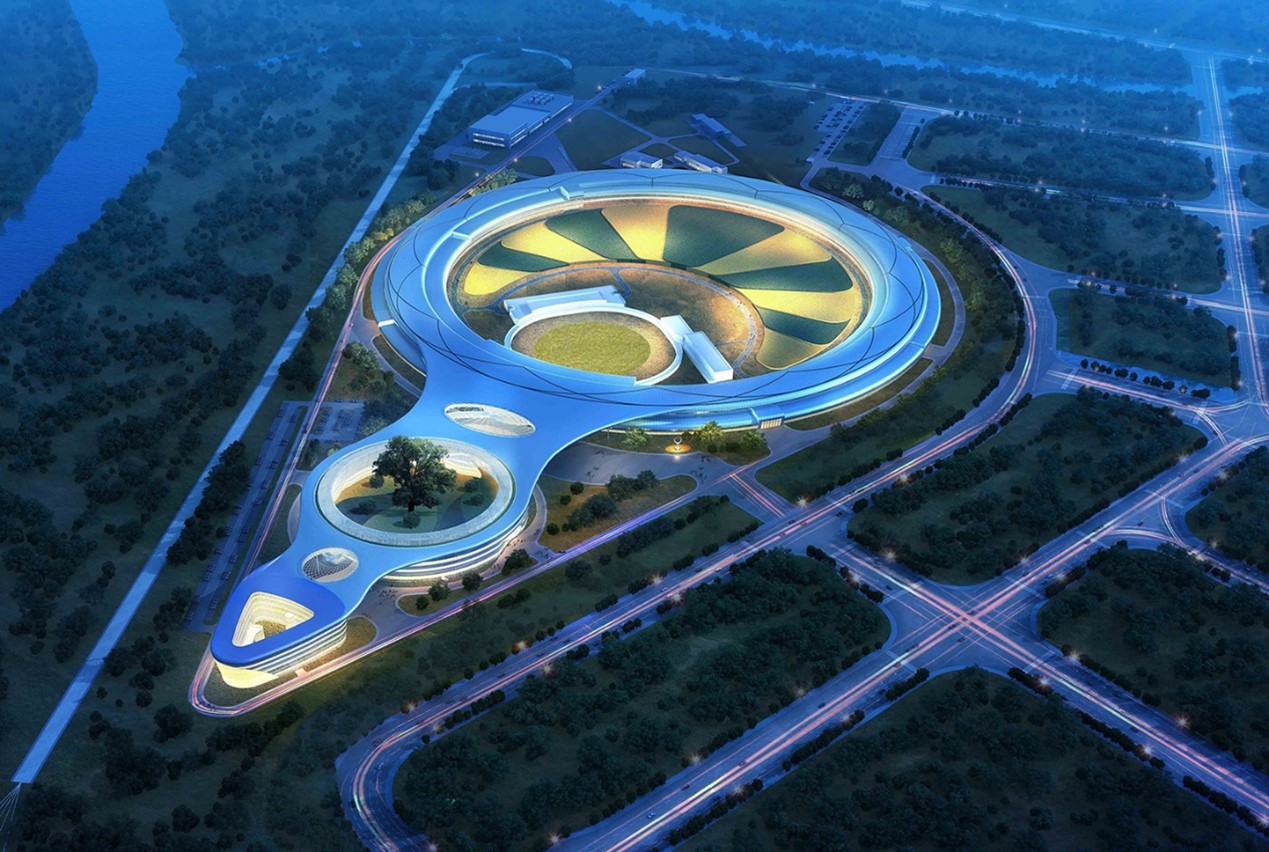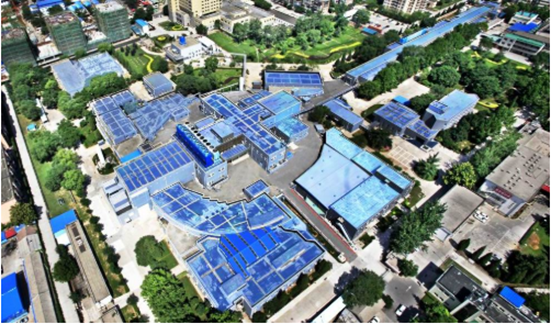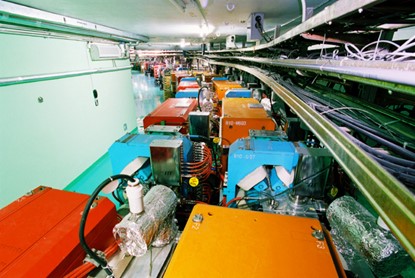Departure Time: 13:00, Friday, September 13, 2024
Pick-up Point: 1F Lobby of Wanda Realm Beijing
In Beijing district, there are two large accelerators runs by IHEP, one is BEPCII, and the other is HEPS. The conference has arranged two facility tour routes, to BEPCII or HEPS, the attendees can select one of them.
HEPS
The High Energy Photon Source (HEPS), under construction since 2019, is located in the northern core area of Huairou Science City (HSC) and is one of HSC’s large scientific facilities. When it is commissioned, HEPS will not only be the first high-energy light source in China but also one of the brightest fourth-generation synchrotron radiation facilities in the world.

HEPS complex buildings resemble a magnifying glass, thus aptly symbolizing the role of HEPS as a powerful tool for characterizing microstructure of matters. And as one of the key projects listed in the 13th Five-year Plan for national major scientific and technological infrastructure construction, HEPS is an important platform for original and innovative research in the fields of basic science and engineering research. HEPS project, undertaken by Institute of High Energy Physics, Chinese Academy of Sciences, comprises of accelerators, beamlines and utility facilities. The estimated construction period is scheduled for six and a half years.
The storage ring of HEPS is 1360.4 m in circumference. Its electron energy is 6 GeV and the brightness is more than 1×1022 phs/s/mm2/mrad2/0.1%BW. By using a 7-Bending Achromatic (7BA) lattice, the horizontal emittance of the electron beam can surpass 60 pm•rad, which is the main feature of the fourth-generation diffraction limited light source.
HEPS could accommodate more than 90 high-performance beamlines and stations. Phase I involves construction of 14 user beamlines and stations for researchers in the fields of engineering materials, energy materials, environment research, health study and medicine development, and catalyst in petrochemistry industry, among others. HEPS will provide high-energy, high-brilliance, high-coherence synchrotron light with energies up to 300 keV and more, with the capability for nm spatial resolution, ps time resolution, and meV energy resolution. While providing conventional technical support for general users, HEPS will also operate as a platform for in-situ and operando investigation of real-time structure evolution of the engineering materials with multi-scale and multimodal X-ray probes, which will enable breakthrough in design and manipulation of such materials to meet the requirement from national development strategies and urgent core industrial needs.

BEPCII
The Upgrade Project of Beijing Electron Positron Collider (BEPCII) consists of the injector, the storage ring, the transportation line, the Beijing Spectrometer (BES), the Beijing Synchrotron Radiation Facility (BSRF). Below is the general layout of the BEPCII.

BEPC II is a two-ring e+e- collider running in the tau-charm energy region (Ecm = 2.0-4.2 GeV), which, with a design luminosity of 1 × 1033 cm-2s-1 at the beam energy of 1.89 GeV, is an improvement of a factor of 100 over its successful predecessor, BEPC. The upgrade will use the existing tunnel, some major infrastructure items, and some of the old magnets. The 202 m long linac of the new machine can accelerate electrons and positrons up to 1.89 GeV with a positron injection rate of 50 mA/min.
Its installation was completed in the summer of 2005 and it has reached most of the design specifications. The collider consists of two 237.5 m long storage rings, one for electrons and one for positrons. They collide at the interaction point with a horizontal crossing angle of 11 mrad and a bunch spacing of 8 ns. Each ring holds 93 bunches with a beam current of 910 mA. The machine will also provide a high flux of synchrotron radiation at a beam energy of 2.5 GeV.


